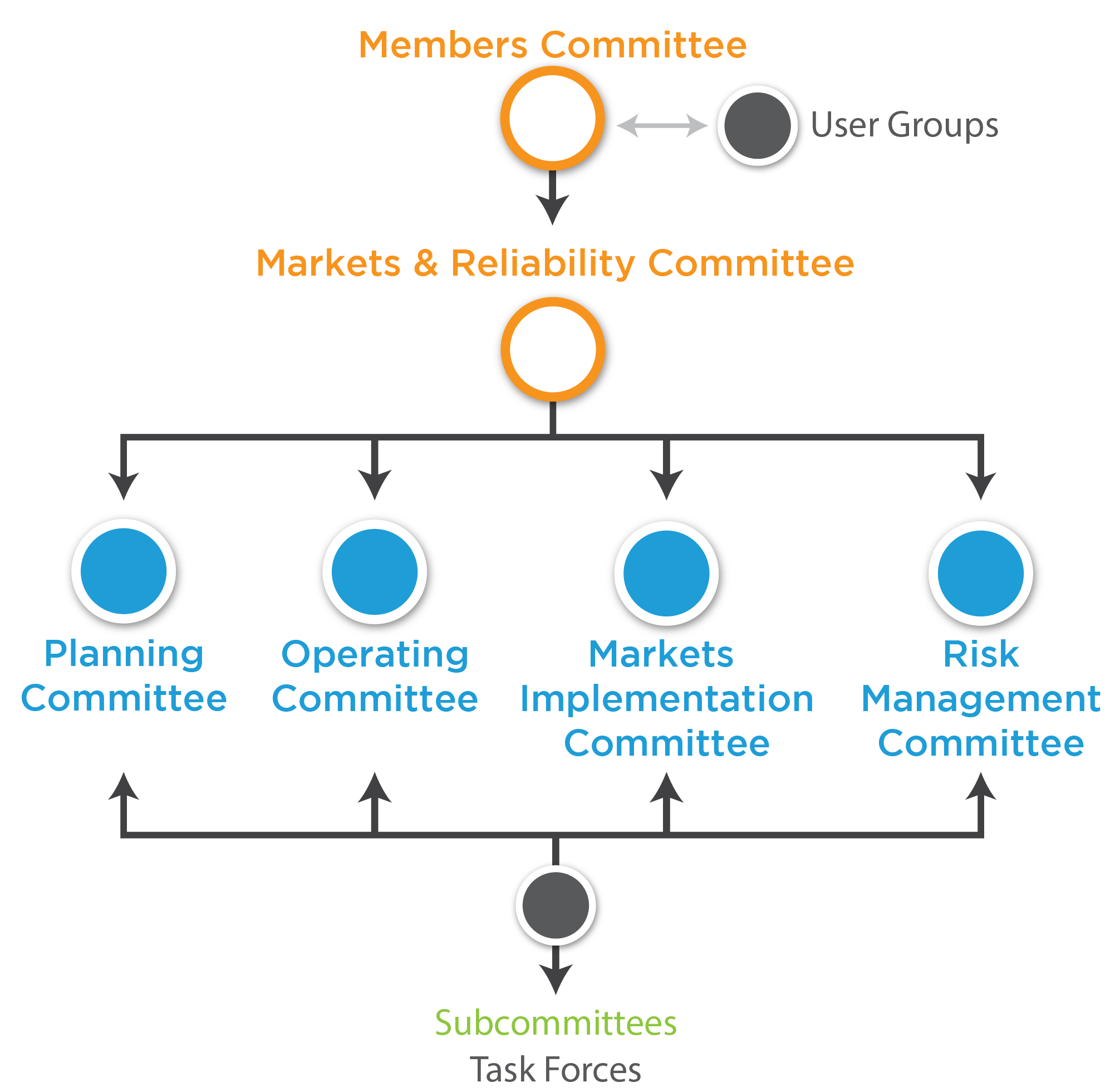Membership Organization
As a membership organization, PJM has a diverse range of members, stakeholders, committees and other groups that drive day-to-day business at PJM.
PJM Members
PJM members include electricity distributors, transmission and generator owners, organizations that can sell electricity to end-users, marketing firms and end-use customers. PJM members take part in PJM’s stakeholder process, which provides a forum for those who have a stake in the wholesale electric industry to discuss and work through issues related to PJM markets, operations, public policies and current and future industry matters. Before becoming a PJM member, an organization has to fulfill applications and requirements outlined in PJM’s governing documents.

PJM Stakeholders
PJM stakeholders include PJM members, the Organization of PJM States Inc. (known as OPSI), state and consumer advocates, an independent market monitoring entity, PJM staff and PJM’s Board of Managers. PJM stakeholders have a “seat at the table” to discuss PJM’s operations, markets and reliability, as well as issues concerning the broader electricity industry. Stakeholders who are not members are invited to participate in stakeholder meetings to foster collaboration between members, government organizations, advocates and the general public. However, stakeholders who are not members cannot vote in committee or sub-committee meetings.
PJM’s stakeholder process – the Consensus-Based Issue Resolution strategy – uses committees, subcommittees, user groups and task forces to conduct business. These groups are integral to developing and refining PJM’s rules, policies and processes. They provide a forum for members to share their positions and resolve difficult issues. Through this collaborative stakeholder process, PJM serves as mediator, empowering competitors to reach agreement and move forward.
Committees, Subcommittees, User Groups and Task Forces
Committees and groups are the centerpiece of PJM’s collaborative stakeholder process. In PJM’s committee structure (PDF), members and stakeholders examine issues and identify and discuss potential solutions to reach a consensus. Committees and groups also serve an educational function for PJM’s stakeholders and enhance communication among the members, with PJM management and the PJM Board of Managers.
PJM’s senior standing committees are the Members Committee and the Markets and Reliability Committee. The Markets Implementation Committee, Operating Committee and Planning Committee are PJM standing committees.
The Members Committee, in which each corporate family of members has a representative, meets approximately monthly and reviews and decides on all major changes and initiatives proposed by other committees and task forces. The purposes of the MC are to:
- Provide advice and recommendations to PJM on issues relating to the safe and reliable operation of the PJM grid.
- Ensure the creation and operation of a robust, competitive and non-discriminatory electric power market.
- Ensure there is no undue influence over PJM’s operations by any member or group of members.
The Markets and Reliability Committee reports to the Members Committee, and works with PJM management and other committees on matters to:
- Ensure the continuing viability and fairness of the PJM markets.
- Ensure the reliable, economic and secure operation of the PJM grid.
- Review proposed changes to the rules and procedures in the PJM Operating Agreement, Tariff, Reliability Assurance Agreement and the PJM manuals.
Committee meetings are open to the public.